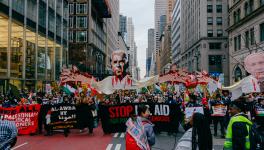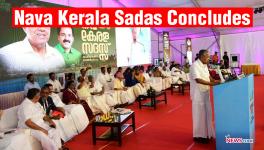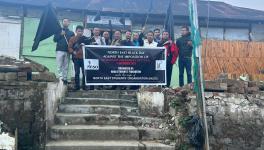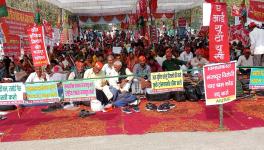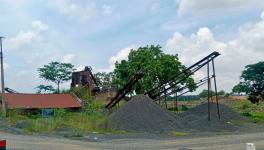Decoding Maharashtra’s Covid-19 Surge and Thackeray’s Governance
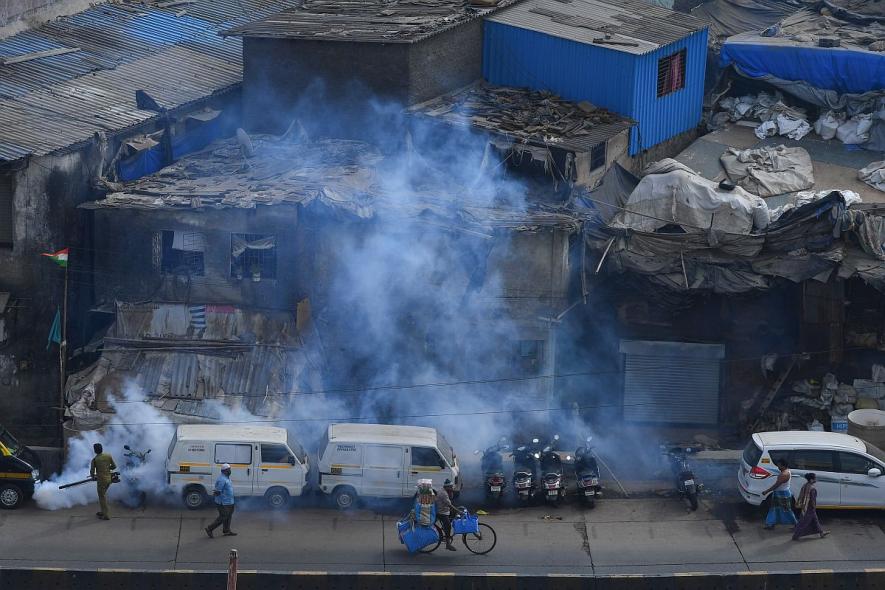
If there were alarm bells for each time a state seemed to lose its grip on the Covid-19 battle, Maharashtra would hear loud clanging at this time. The numbers of Covid-19 patients have galloped, pushing the state government to urgently revisit its strategy and put a new—somewhat desperate—control programme in place. The portents in mid-September are dire enough for even members of the government’s Covid-19 Task Force, all senior doctors and healthcare professionals, to urge an immediate return to the basics of tracing-tracking-treating patients.
From early March when the first case was detected, to 10 August, Maharashtra had a total of five lakh Covid-19 cases. A month later, the caseload had crossed 10 lakh (1 million), the last two weeks of that month seeing a massive 48% increase. Every eighth new Covid-19 patient in the world was in Maharashtra. The state was only a few counts away from Russia’s total tally of 10,50,000 cases on 12 September. It subsequently crossed the tally and surpassed countries such as Mexico, South Africa and Spain. By 16 September, the total cases in Maharashtra were nearly 10,98,000 and 30,409 had died of the infection.
The September surge is now undeniable—and seems unstoppable too. Four ministers in Chief Minister Uddhav Thackeray’s cabinet have so far tested Covid-19 positive despite taking precautions, nearly 200 police personnel have died so far, and 16 of every 100 healthcare workers have tested positive when the national average is barely seven. The Case Fatality Rate (CFR), or the proportion of Covid-19 patients who succumb to the illness compared to the total number diagnosed with it, has hovered around 2.8% against the national average of 1.7%. The surge is causing concern in the topmost echelons of Thackeray’s government and the Task Force, but they are worried also about a new pattern of the Covid-19 spread: districts which were green zones for months registered stunning increases in September.
The three densely populated districts of Mumbai, Pune and Thane still account for more than half the total Covid-19 cases in Maharashtra but the rate of growth in these cities is between 12% and 22%. The first half of September saw cases rise rapidly—by more than 75%—in remote rural districts like Gondia and Chandrapur in Vidarbha region. Wardha district (near Nagpur) and Sindhudurg district (in coastal Konkan) which were green zones registered phenomenal increases of 96.7% and 65% respectively in the rate of growth of Covid-19 cases during the fortnight. Bhandara district more than doubled its caseload from 1,173 to 2,408 in the two weeks.
The absolute numbers may be a few thousands in these districts so far but the high rates of growth are worrying. The lack of adequate and advanced healthcare infrastructure needed to tackle Covid-19 complications adds to the worry. The basic or primary level hospitals in many districts suffer from inadequate equipment and beds, trained medical professionals, and oxygen cylinders. Even the relatively better equipped Pune district—dubious distinction of being the first district with more than two lakh cases—is now battling a severe lack of oxygen cylinders in Covid hospitals. Health minister Rajesh Tope subsequently decided to divert large quantities of oxygen meant for industrial use to the medical sector and vehicles carrying oxygen cylinders were deemed as ambulances.
Though the Case Fatality Rate had dropped from the high of 6% in May and an average of 3.24% in July-August, it was still higher than the national average. A higher CFR, epidemiologists say, reflects confusion or lack of proper protocols in treatment and administration of drugs, or poor healthcare infrastructure which cannot support Covid-19 treatment. Stories of delay in treatment in rural areas point to a basic lacuna: long turnaround time in test reports, often more than two days, during which the patient’s condition deteriorates beyond the reach of medical help.
Did the Thackeray government miss the wood for the trees? Why is the graph in Maharashtra steadily—and now suddenly—climbing? There is no denying that the government was initially caught by surprise and as happens in any crisis, struggled to evolve a fool-proof protocol for detection and treatment in the early weeks. To make things worse, medical and treatment protocols changed every now and then across the world and often threw up conflicting paths to adopt. There was an element of learning-on-the-run for many of those managing the pandemic in the state.
That said, there seems to have been some missteps too, such as easing too many restrictions after the third lockdown, not adequately ramping up medical infrastructure in remote and rural areas, not enforcing the containment zones strictly in cities, laxity in enforcing use of masks (the fine for not wearing one was recently reduced from Rs.1,000 to Rs.200), and the usual Indian malaise of multiple departments working on the same problem leading to unintended chaos and lapses. In early September, office attendance was allowed to rise to 30% of its staff, public buses are over-crowded with commuters jostling for space because suburban local trains and metros have not resumed operations.
The state health department and the Task Force are aware of the abyss they are staring into; it stares back at them. There is no alternative except to go hyper-local with the only silver bullet there is: trace-track-test with renewed aggression. Dharavi, the infamous informal settlement in the heart of Mumbai with the world’s highest density where social distancing and hand-washing were near impossible, showed a remarkable turnaround in its caseload in June after health officials aggressively adopted the trace-track-test strategy.
The Task Force has suggested that the Dharavi Model be now rolled out across the state’s worst hit areas. The doctors in the Force have also called community sensitisation on a massive scale and citizens’ involvement in tracing and testing. This, of course, is easier recommended than done, especially with healthcare workers exhausted from months of work and multiplicity of departments involved in Covid-19 care. Besides, the infrastructure in rural areas is hardly that available in Mumbai. Dr Shashank Joshi, member of the Task Force, told The Hindustan Times this week that though there was enough time, the state had “fallen short of building capacity and ramping up infrastructure in many districts”.
The government offers its best excuse for the alarming numbers: increased and aggressive testing. Chief Minister Thackeray, Task Force members, and independent doctors are unanimous that higher testing has led to higher numbers and increased testing is a good thing. In Mumbai, for instance, the number of tests has increased nearly three-fold; Maharashtra has conducted more than 51 lakh tests so far. They have called for scaling it up further. There is little gain in focussing solely on the total caseload, they say; the focus should be on reducing Case Fatality Rate to below 1% and positivity rate to around 5%.
What is unsaid or less discussed is that the surge is likely an outcome of easing of restrictions in August including inter-district travel and celebration of festivals, especially the ten-day Ganesh Chaturthi festival. The festival has many citizens from large cities such as Mumbai and Pune travel back to their homes in far-away districts, mingling with crowds, and a general atmosphere of ease after months of lockdown. ‘Avoid festivities because they mean crowds and crowds are super-spreader events,’ Dr Sanjay Oak, head of the Task Force, told the media. Dr Oak too called for an immediate scaling up of the Dharavi Model and added two points to his prescription for the state: enhance contact tracing to chase-and-halt the virus, install kiosks to easily collect swabs for increased testing.
The recommendations place additional responsibility on the state government, especially healthcare workers, but the government rolled out a new campaign which shifts some of the responsibility on to citizens. Perhaps not without reason given that peoples’ movements and commercial activities are back in good swing in most places and people are seen without masks or wrongly-worn masks. Section 144 was reimposed in Mumbai for the rest of the month to curb movement.
The campaign called “Majhe Kutumb, Majhi Jababdari” (My Family, My Responsibility) which began on 15 September asks citizens to be alert and conscious, follow prevention protocols with diligence, and cooperate with officials. It emphasises the track-trace-test strategy; officials of municipal corporations, municipal councils and gram panchayats will conduct door-to-door surveys to aggressively test and treat Covid-19 patients and create greater sense of awareness all around. The aim is to reach 2.25 crore households twice a month across Maharashtra. The Thackeray government hopes that the campaign will yield results to halt the September surge. But it’s like a drowning man clutching a straw.
The author is a senior Mumbai-based journalist and columnist who writes on politics, cities, media and gender. The views are personal.
Get the latest reports & analysis with people's perspective on Protests, movements & deep analytical videos, discussions of the current affairs in your Telegram app. Subscribe to NewsClick's Telegram channel & get Real-Time updates on stories, as they get published on our website.











